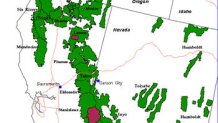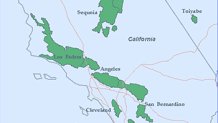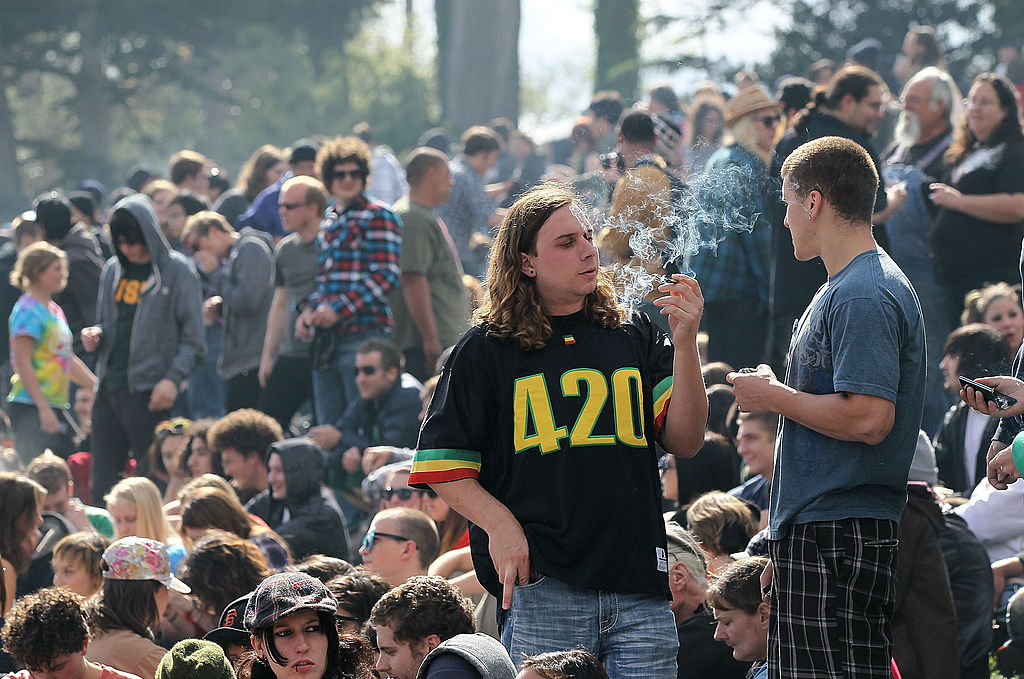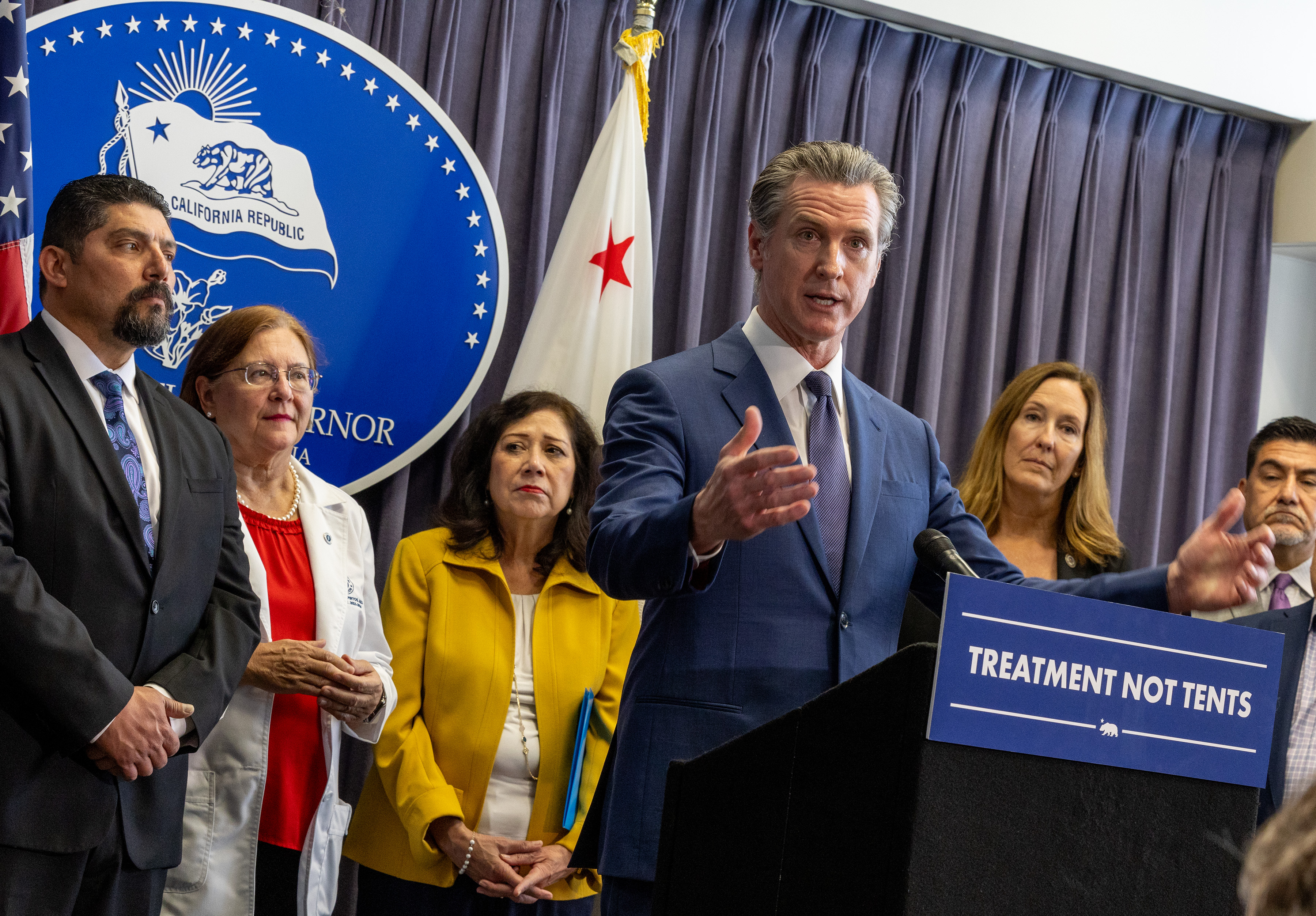In the 40 years since fires sparked by lightning have been allowed to burn unabated in a section of Yosemite National Park, ecologist Scott Stephens has watched extensive conifer forests grow back as a patchwork of not just trees, but also meadows with wetland plants.
Places in the Illilouette Creek Basin that were typically dry are now covered with four inches of water, said Stephens, a professor of fire science at the University of California at Berkeley.
"And, amazingly a lot of these places maintain this wetness even during this four-year drought," he said.
Those wet fields are assuming even more importance as parts of California face a heightened risk of fire this summer. Climate change has left the state’s winters drier and springs warmer, and it is beginning the fifth year of a drought so harsh that it has killed more than 29 million trees. The severe weather is even threatening the iconic giant sequoias in the Sierra Nevada Mountains.
As the U.S. Forest Service revises how it manages its 193 million acres — with three forests in California's Sierra Nevada among the first to implement a new approach — Stephens and other fire scientists are urging it to go forward with plans to allow more fires to burn through dry vegetation. The accumulation of brush and grasses over decades makes it dangerous to try to put out every fire, he and six colleagues wrote in the journal Science last fall. Suppressing fires repeatedly simply promises more disastrous fires in the future.
"We’ve got to change course in the way we manage fire," Stephens said.
Local
U.S. Agriculture Secretary Tom Vilsack last week warned about a potentially fiery season not only in Southern California, but also in the Great Basin of Nevada, portions of the Southwest and Florida and Hawaii.
To prepare for the summer, the California Department of Forestry and Fire Protection has hired 400 seasonal firefighters across the state whose focus will be on setting prescribed fires, removing dead trees, creating fire breaks, cutting back dense brush, and otherwise preventing fires.
Daniel Berlant, a spokesman for Cal Fire, said the department had already fought 900 wildfires since the beginning of the year.
"All of those dead trees that are near homes are all fuel for wildfires," he said.
Sixteen of the most historically significant wildfires on record, as designated by the federal government, erupted over the last 10 years, Vilsack noted. The most recent: The Rim Fire which burned 257,000 acres in the Stanislaus National Forest in the central Sierra Nevada in 2013, one of the largest fires in California’s history.

"We keep setting records we don’t want to see beat," Vilsack said in a statement after a briefing from the U.S. Forest Service, the primary federal firefighting service.
Stephens was working in the Stanislaus National Forest at the time and recalls thinking how susceptible it would be to a high-severity fire. Nearly three years later, he compares its devastation to the landscape in the Illilouette — up to 20,000 acres of nothing but dead trees in the Stanislaus National Forest to small plots of only 3 to 5 acres on average of similar destruction in the Illilouette.
"It's small," he said. "The forest is able to maintain itself. That's the key -- just having forests being able to maintain themselves, regenerate, evolve. The Rim Fire, that’s really different, terrible."
The National Park Service began allowing so-called lightning fires to burn themselves out in Illilouette in the early 1970s. Most run into each other, Stephens said, and if an area has been permitted to burn in the last decade, the chance that a new fire will not spread is 90 percent or more.
What was once an unbroken thick forest with a dense canopy now has gaps of up to 4 acres throughout, with sections of thinned woods that are more resilient to fire, he said.
Lauren Ponisio, a graduate student at the University of California at Berkeley, looked at the types of wildlife present in the Illilouette, especially bees, the most abundant group of pollinators there. Over two years she and others caught about 8,000 individual bees, representing about 160 species.
"People don’t usually think of forests as really important places for bees," she said. "It is because when we think of forests, we think of these fire-suppressed forests, these closed canopy forests, but when you’re out in the Illilouette, it's just so heterogenous."
In areas where there had been a mix of how often fires had burned and with what severity, there was more diversity of flowering plants and pollinators, she said. For every 5 percent increase in the diversity of the fires, there was one additional species of plants and one species of pollinators, she said.
"One of the most widely supported theories in ecology is this idea that diversity begets diversity and so fire diversity begets habitat diversity which begets the diversity of wildlife," she said. "You have this nice relationship. And fire’s maintaining that."
The National Park Service, with its 84 million acres of parks, has led the way in allowing fires to shape landscapes like the Illilouette, Stephens said. Now as the U.S. Forest Service considers far-reaching changes -- with the 4.6 million acres of California's Inyo, Sequoia and Sierra national forests among the first up -- its goal is for similar benefits.

"We hope that the landscape can be restored to conditions where fires are more variable, with some areas burning at different intensities to provide the best mix of ecological conditions and habitat diversity," said Don Yasuda, a regional analyst and forest planning biologist with the U.S. Forest Service.
The drought and devastating fires like the Rim Fire -- with their long-lasting consequences on old forests and the habitat of wildlife species like the Pacific fisher and California spotted owl -- have brought an urgency to the new approach, the service said in a statement.
The soaring costs of fighting fires are an added impetus. The Forest Service spent more than $1.7 billion fighting fires last year, amounting to half of its budget. That contrasts with just 16 percent in 1995. When it exhausted its firefighting budget, the service was forced to draw on funds it had hoped to use for restoration projects.
Under the new plans, which are still in drafts and will not be finalized until late next year after time for public comments, fires would be treated differently in different zones — with the Forest Service focused on protecting communities in some areas and allowing fires to burn in others: both those sparked by lightning and controlled fires, some set along ridge lines and major roads. More prescribed, or set, fires would create more smoke but under controlled conditions that would affect communities less and for a shorter time than wildfires, it said.
"Research has proven time and time again that fire can be beneficial and is responsible for shaping the landscape," said Jennifer Anderson, a fuels planner for the national forests in California. "We have a choice to suppress every fire or to manage some fires to meet resource objectives at the right place and time."
Among the biggest challenges is the enormous area that needs to be restored. Large fires are needed to periodically reduce vegetation — as opposed to intense fires that destroy large swathes of trees, it said.
The Forest Service will be constrained by the number of people who live in and near the forests and by campgrounds, power lines, cell towers and infrastructure within the forests. Fires may never be able to burn to the extent that they once did, it said.
Stephens predicts some opposition as soon as fires are allowed to burn. Communities will be affected, recreation curtailed, and there will be uncertainty about what the fires will do, he said.
"But I’m convinced that if we don’t begin to do things like that, all we’re going to have is higher and higher vulnerability in our forests and eventually we’re going to have outcomes that are much worse," he said.



